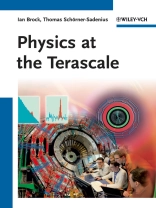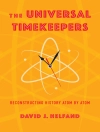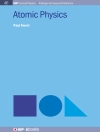Written by authors working at the forefront of research, this accessible treatment presents the current status of the field of collider-based particle physics at the highest energies available, as well as recent results and experimental techniques.
It is clearly divided into three sections; The first covers the physics — discussing the various aspects of the Standard Model as well as its extensions, explaining important experimental results and highlighting the expectations from the Large Hadron Collider (LHC). The second is dedicated to the involved technologies and detector concepts, and the third covers the important – but often neglected – topics of the organisation and financing of high-energy physics research.
A useful resource for students and researchers from high-energy physics.
สารบัญ
PART I The Physics
1. Setting the Scene
2. The Standard Model: Our Picture of the Microcosm
3. Electroweak and Standard Model Tests: The Quest for Precision
4. Hard QCD: Still going strong
5. Monte Carlo Generators and Fixed-order Calculations: Predicting the (Un)expected
6. The Higgs Boson: Still Elusive after 40 Years
7. Supersymmetry
8. Quark Flavour Physics
9. Top Quarks: The Peak of the Mass Hierarchy?
10. Beyond SUSY and the Standard Model: Exotica
11. Forward and Diffractive Physics: Of Rapidity Gaps and Small Angles
PART II The Technology
12. Accelerators: The Particle Smashers
13. Detector Concepts: From Technologies to Physics Results
14. Tracking Detectors: Following the Charges
15. Calorimeters: Precise Energy Measurements
16. Muon Detectors: Catching Penetrating Particles
17. Luminosity Determination: Normalising the Rates
18. Trigger Systems in High Energy Physics Experiments
19. Grid Computing in High-Energy Physics
PART III The Organisation
20. The Sociology and Management of Terascale Experiments: Organisation and Community
21. Funding of High Energy Physics
22. The Role of the Big Labs
23. Communication, Outreach and the Terascale
PART IV Appendices
Index
เกี่ยวกับผู้แต่ง
Ian Brock is the Scientific Manager of the Helmholtz Alliance ‘Physics at the Terascale’. He is an experimental physics professor currently on leave of absence from the University of Bonn. During his career he has worked on seven different high-energy physics experiments in Europe and the USA (TASSO, Crystal Ball, CLEO, L3, ZEUS, ATLAS and CLEOc). He has a wide experience in the building and maintaining of detectors, data analysis and statistical tools. He was the main author of the Mn_Fit software package, which was widely used in the high-energy physics community over the past 20 years.
Thomas Schorner-Sadenius studied physics in Hamburg an Munich and worked on experiments at CERN (Crystal Barrel, OPAL, ATLAS, CMS) and at DESY (H1, ZEUS). His main expertise is in data analysis in the field of QCD studies, in triggering in high-energy physics experiments and in the running and maintenance of large detector systems. Currently Thomas Schorner-Sadenius is the leader of Analysis Centre of the Helmholtz Alliance ‘Physics at the Terascale’ and responsible for the shaping of the analysis-related programme of the Alliance.











